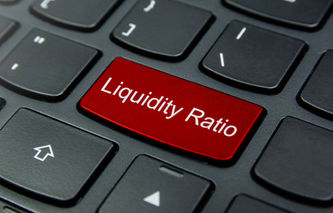Definition
The term liquidity risk typically refers to the inability of an investor to buy or sell an asset to minimize or avoid a financial loss. Liquidity risk can also refer to a company's inability to meet a debt obligation without incurring a loss.
Explanation
Generally, the term liquidity risk is used to describe situations in which an investor wishes to buy or sell an asset, but is unable to find a counterparty to participate in the transaction. That is to say, they cannot find a market participant that also wishes to buy or sell that same asset. The term also refers to the inability to meet a financial obligation as it comes due. These two forms of liquidity risk are sometimes referred to as market and funding liquidity:
Market Liquidity Risk: typically associated with the trading of securities, this is a subset of the overall market risk, and can compound the risks specific to that market. For example, there might be an economic downturn that starts a decline in the price of common stocks, which is a market risk. If the investor is unable to sell their securities, this liquidity risk will compound the effect of the market risk. A common indicator of market liquidity risk is a widening of the bid-ask spread.
Funding Liquidity Risk: typically associated with corporations or financial institutions that have issued debt in the marketplace. This is the risk the borrower will not be able to meet its debt obligations as they come due without materially affecting its operating or financial health. For example, a company may expand so rapidly that it cannot generate enough cash in the near term to pay money owed to bondholders. In turn, this will hurt the credit rating of the company's bonds, adding to their cost to borrow money. In this way, funding liquidity risk compounds the effect of credit risk. Funding risk can be assessed by examining the cash flows of a company.


.png)
.png)


